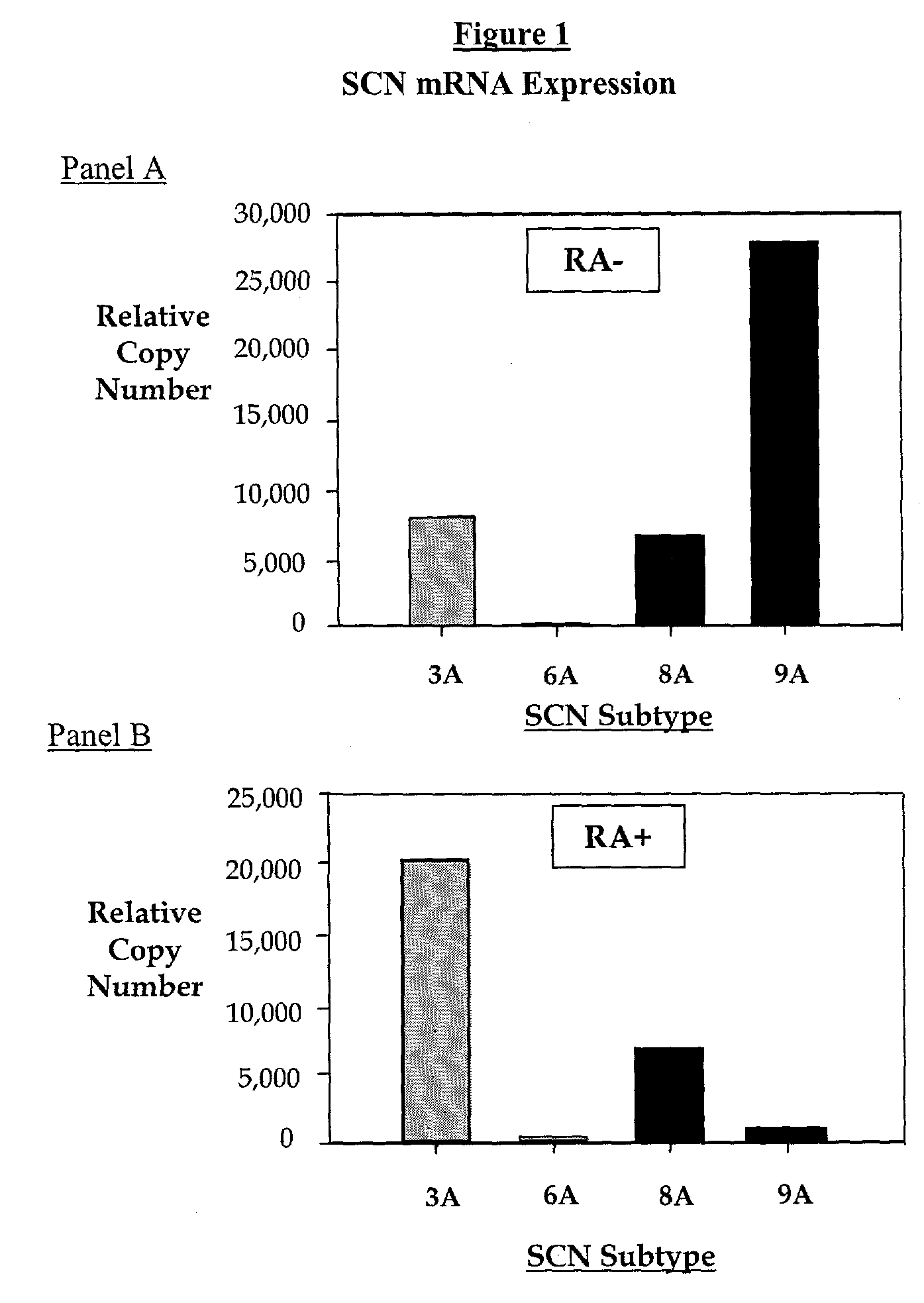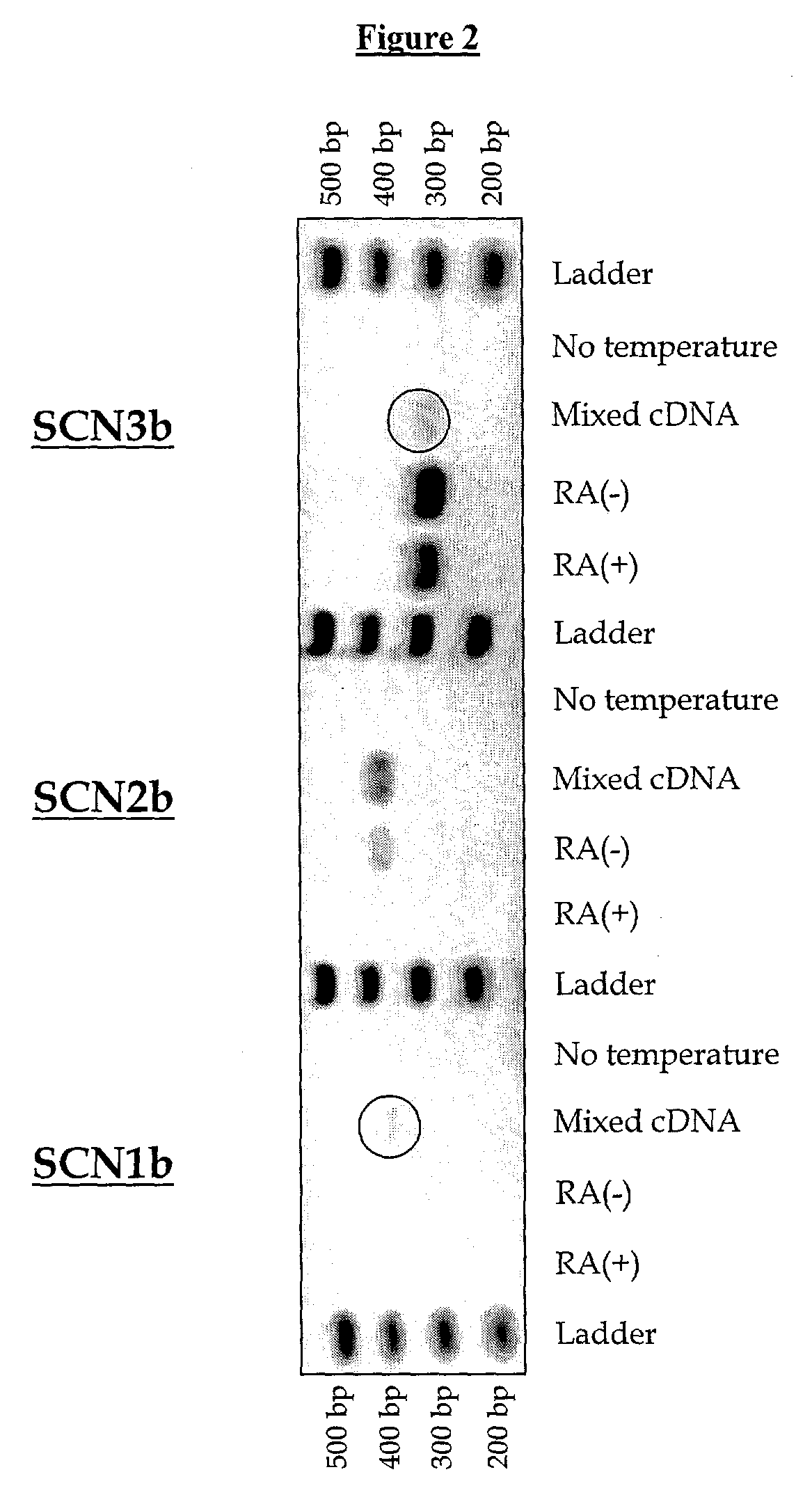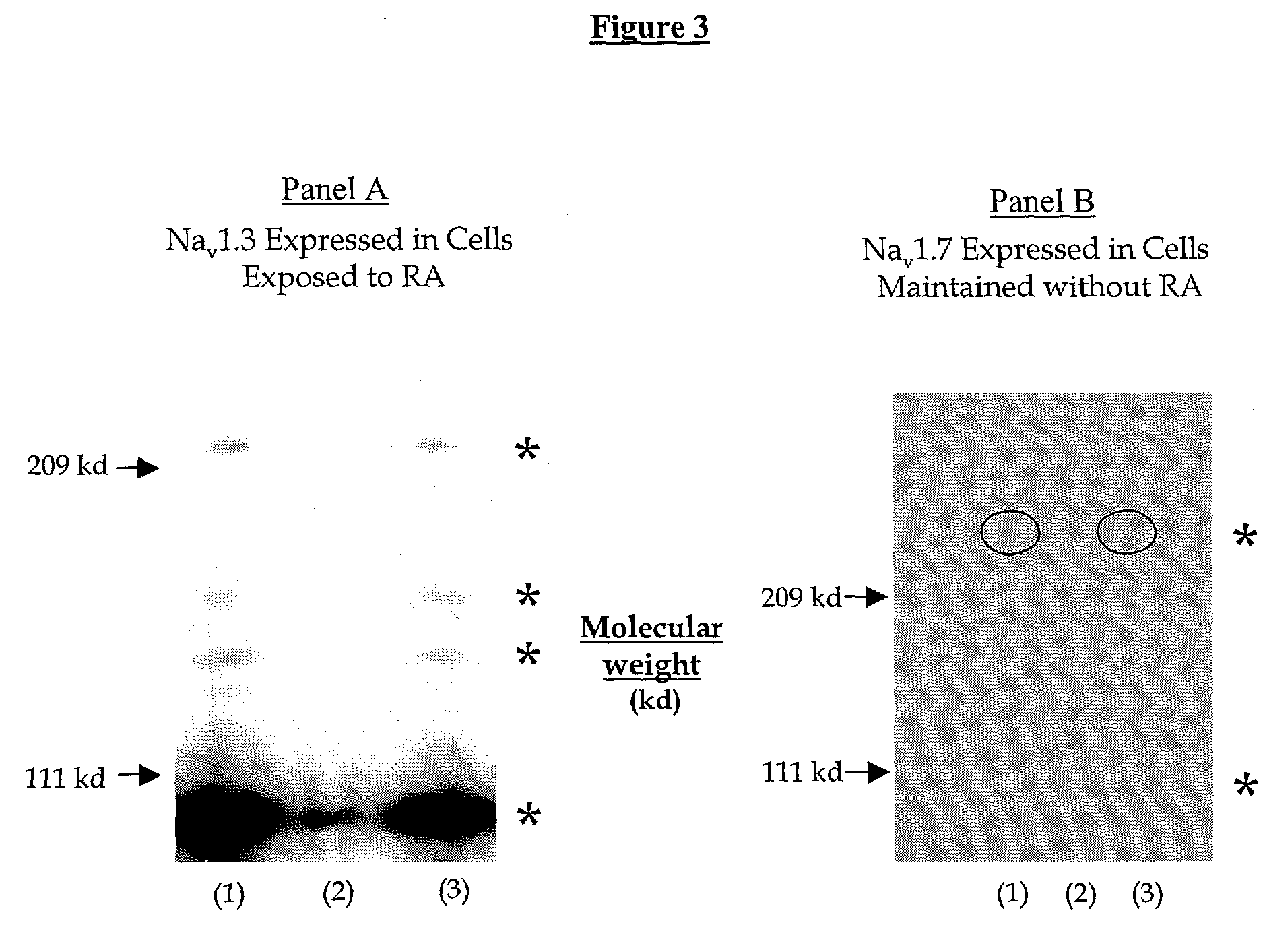Method for identifying modulators of ion channels
a technology of ion channels and modulators, which is applied in the field of methods for identifying modulators of ion channels, can solve the problems of slowing down target-driven therapeutic design, difficult to construct cell lines that stably,
- Summary
- Abstract
- Description
- Claims
- Application Information
AI Technical Summary
Problems solved by technology
Method used
Image
Examples
example 2
Cell-Based Assay Using Voltage Sensitive Dyes to Measure Na.sub.v Activity in IMR-32 Cells
[0076] IMR-32 cells cultured in growth medium (Eagles minimal essential media, 2 mM L-glutamine and Earle's BSS adjusted to contain 1.5 g / L sodium bicarbonate, 0.1 mM non-essential amino acids, 1.0 mM sodium pyruvate, 1 .mu.M RA) are plated (40 .mu.l per well) at a density of 5.5.times.10.sup.6 cells per 384-well plate and incubated for eighteen to twenty-four hours at approximately 37.degree. C. in 5% CO.sub.0. IMR-32 cells were plated on tissue culture-treated plates without poly-D-Lysine since prolonged exposure to poly-D-lysine (e.g. commercially prepared cell culture plates) reduced cell adhesion and viability. The saline used in most studies was 2K / 2Ca buffer, and it contained (in mM): 130 mM NaCl, 2 mM KCl, 1 mM MgCl.sub.2, 2 mM CaCl.sub.2, 20 mM HEPES, pH 7.4. On the day of the assay, 20.times. voltage-sensitive dye (Molecular Devices, Sunnyvale, Calif.; catalog # R8034) was diluted 1:1...
example 3
Exposure of IMR-32 Cells to RA Alters the Expression of Populations of TTX-S Sodium Currents Consistent with an Up-Regulation of Na.sub.v 1.3.
[0079] Electrophysiological Recordings from IMR-32 Cells
[0080] The endogenous voltage gated Na currents expressed in IMR-32 cells grown in the presence or absence of 1 .mu.M RA were measured using standard whole cell voltage clamp techniques (Hamill et al. (1981). The whole cell patch clamp technique was used to record voltage-activated currents from IMR-32 cells maintained for two or more days on 12 mm glass coverslips in the presence or absence of RA (1 .mu.M). Cells were visualized using a Nikon Diaphot 300 with DIC Nomarski optics. The standard physiological saline (1Ca tyrodes ("Tyrodes") contains: 130 mM NaCl, 4 mM KCl, 1 mM CaCl.sub.2, 1.2 mM MgCl.sub.2, and 10 mM hemi-Na-HEPES (pH 7.3, 295-300 mOsm as measured using a Wescor 5500 vapor-pressure (Wescor, Inc., Logan, Utah)). Recording electrodes are fabricated from borosilicate capillar...
PUM
| Property | Measurement | Unit |
|---|---|---|
| membrane potential | aaaaa | aaaaa |
| voltage | aaaaa | aaaaa |
| voltage | aaaaa | aaaaa |
Abstract
Description
Claims
Application Information
 Login to View More
Login to View More - R&D
- Intellectual Property
- Life Sciences
- Materials
- Tech Scout
- Unparalleled Data Quality
- Higher Quality Content
- 60% Fewer Hallucinations
Browse by: Latest US Patents, China's latest patents, Technical Efficacy Thesaurus, Application Domain, Technology Topic, Popular Technical Reports.
© 2025 PatSnap. All rights reserved.Legal|Privacy policy|Modern Slavery Act Transparency Statement|Sitemap|About US| Contact US: help@patsnap.com



